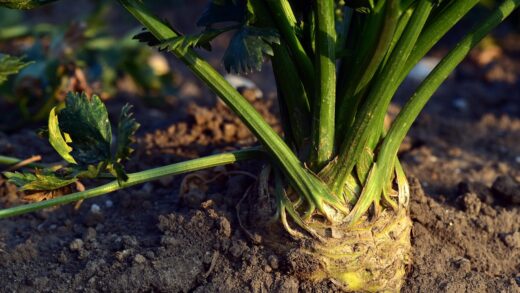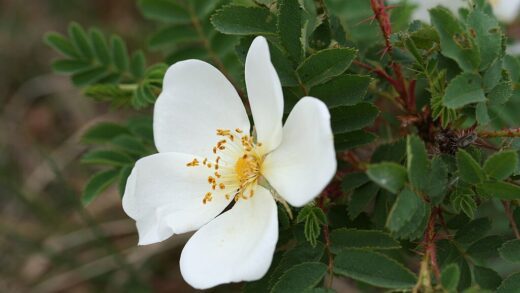The topic of pruning and cutting back the African lily is one that often raises questions among gardeners, as the requirements are quite different from those of many other common garden perennials. For the most part, this plant is relatively low-maintenance and does not require regular, complex pruning to control its size or shape. However, a few specific cutting practices, when performed at the appropriate times, can help to maintain the plant’s health, improve its appearance, and direct its energy towards the most productive functions. The primary pruning tasks involve deadheading spent flowers and managing the foliage at the end of the season.
The most frequent pruning task associated with the African lily is deadheading, which is the removal of the flower stalks after the blooms have faded. This is done for both aesthetic and horticultural reasons. Aesthetically, removing the browning, spent flower heads keeps the plant looking neat and tidy throughout the summer. Horticulturally, it prevents the plant from expending a significant amount of energy on developing seeds. By cutting off the flower stalk, this energy is redirected back to the rhizomes, where it can be stored to fuel the next year’s growth and flower production.
Unlike many shrubs and perennials, the African lily does not require formative pruning to create a particular shape or framework. Its natural, clumping habit and fountain-like foliage create an attractive architectural form without intervention. The only time general cutting of the foliage is warranted during the growing season is to remove any leaves that have become yellowed, damaged, or are showing signs of disease. This is a matter of good garden hygiene that helps to maintain the plant’s health and appearance.
The most significant cutting back occurs at the end of the growing season and is primarily relevant for the deciduous varieties. These types naturally die back in the autumn, and once the foliage has completely withered, it can be cut away. For evergreen varieties, however, the foliage should be left intact, as it persists through the winter. Understanding these key differences and the simple techniques involved will ensure that any pruning performed benefits the plant rather than harms it.
The practice of deadheading
Deadheading is a simple yet highly beneficial practice for the care of African lilies. The process involves removing the entire flower stalk, or ‘scape’, after the individual flowers on the head have withered and lost their color. It is best to perform this task promptly once the floral display is clearly over. Waiting too long will allow the plant to begin the process of forming seed pods, which consumes a considerable amount of the plant’s energy reserves.
To correctly deadhead an African lily, use a pair of clean, sharp secateurs or pruning shears. Follow the leafless flower stalk all the way down to the point where it emerges from the base of the leafy clump. Make a clean cut as close to the base as possible without damaging any of the surrounding foliage. Removing the entire stalk is important for a tidy appearance; simply cutting off the flower head at the top will leave an unattractive, leafless stem sticking out of the plant.
The primary horticultural benefit of deadheading is the conservation of energy. If left on the plant, the fertilized flowers will develop into seed heads, a process that requires a substantial investment of resources from the plant. By removing the spent flower stalk, you prevent this energy expenditure and allow the plant to divert those resources back into its rhizomes. This stored energy will be used to support robust growth and, crucially, the formation of more flower buds for the following season, often leading to a more impressive display year after year.
While the main reason for deadheading is to prevent seed formation, it is worth noting that some gardeners choose to leave a few of the most architecturally interesting seed heads on the plant. They can provide structural interest in the garden during the autumn and winter months, especially when coated in frost. If you choose to do this, be aware that it may slightly reduce the energy stores for the following year’s bloom. Additionally, if you wish to collect seed for propagation, you must leave the flower heads on the plant to allow the seeds to mature and ripen fully.
Managing foliage after flowering
Once the flowering period is over, the management of the foliage becomes the next focus, and the correct approach depends entirely on whether the variety is deciduous or evergreen. For all types of African lily, it is absolutely crucial to leave the healthy green foliage intact for as long as possible after flowering. The leaves continue to be the plant’s engine, photosynthesizing through the late summer and autumn to produce the energy that will be stored in the rhizomes over winter. Prematurely cutting back this green foliage is one of the most detrimental things you can do, as it will starve the plant of the resources needed for survival and future flowering.
For deciduous varieties, the leaves will naturally begin to yellow and wither as autumn progresses. This is a sign that the plant is entering dormancy and is systematically drawing all the valuable nutrients and energy from the leaves back down into its storage organs. It is essential to allow this process of senescence to complete fully. The foliage should only be cut back once it has become completely brown and shrivelled. At this stage, it has served its purpose, and it can be cut down to near the base of the plant. This tidies the area for winter and removes dead material that could harbor pests.
For evergreen varieties, the approach is entirely different. As the name implies, these plants retain their foliage throughout the year and do not naturally die back in the same way. Therefore, the main leafy clump should not be cut back in the autumn. The leaves will persist through the winter, although the plant will be in a dormant state with no active growth. The only trimming that should be done on evergreen types is the selective removal of any individual leaves that have become yellow, damaged, or unsightly. This can be done at any time of year to maintain a clean appearance.
Throughout the post-flowering period, regular inspection of the foliage for signs of pests or diseases is also a key part of maintenance. Any leaves showing signs of fungal spots or pest infestations should be removed promptly to prevent the problem from spreading. This simple act of sanitation helps to keep the plant healthy as it prepares for its winter dormancy and reduces the chances of problems carrying over to the next growing season. Good hygiene is an often-overlooked but important aspect of plant care.
Pruning for division and propagation
Pruning plays a preparatory role in the process of propagating African lilies by division. While the primary action is the separation of the root mass, some selective trimming of the foliage can make the process easier and more successful. When a large, congested clump is lifted from the ground or a pot for division in the spring, the sheer volume of foliage can be cumbersome to handle. In this situation, it can be beneficial to trim the leaves back by about half.
This trimming of the foliage serves two main purposes. Firstly, it makes the clump more manageable and allows for a clearer view of the crown and the rhizomes, making it easier to identify the best places to make the cuts for division. Secondly, and more importantly, it helps to reduce the stress on the newly created divisions. When a portion of the root system is inevitably damaged or lost during division, the remaining roots may struggle to support the full mass of existing leaves. Reducing the amount of foliage reduces the demand for water and nutrients, allowing the division to focus its energy on establishing new roots.
When trimming the leaves for division, use a sharp, clean pair of shears or secateurs to cut them back neatly. A cut that reduces the leaves to about 15-20 centimeters in length is usually sufficient. This leaves enough foliage for the plant to continue photosynthesizing while significantly reducing the transpiration surface area. This practice is particularly helpful when dividing plants later in the spring when they have already produced a substantial amount of leafy growth.
It is important to emphasize that this type of heavy foliage pruning should only be done in the specific context of division. It is not a routine maintenance practice and would be harmful to the plant if done at other times of the year without the accompanying root disturbance. After the divisions are replanted, this trimmed foliage will soon be replaced by a new flush of growth as the plant re-establishes itself in its new position.
Rejuvenation pruning
The concept of ‘rejuvenation pruning’ in the traditional sense, such as the hard pruning of overgrown shrubs to stimulate new growth from the base, does not directly apply to African lilies. As herbaceous perennials with a clumping habit, they cannot be rejuvenated by simply cutting the entire plant back. The primary method for rejuvenating an old, overcrowded, or underperforming clump is not through pruning the top growth, but through the process of lifting and dividing the rhizomes.
Over time, an African lily clump can become very large and congested. The center of the clump may become old, woody, and less productive, resulting in fewer flowers and weaker growth, particularly in the middle of the plant. This is a clear sign that the clump is in need of rejuvenation. This is achieved by lifting the entire plant out of the soil in the spring and dividing it into several smaller, healthier sections.
During this process of division, there is an element of pruning the root system. As you separate the clump, you should take the opportunity to inspect the rhizomes and roots. Cut away and discard any parts that are old, woody, dead, or showing signs of rot. The goal is to create new divisions from the younger, more vigorous outer portions of the parent clump. These younger sections have more vitality and will establish more quickly to create a newly rejuvenated plant.
Therefore, while you may not be ‘pruning’ the top of the plant to rejuvenate it, you are effectively ‘pruning’ the root mass to achieve the same outcome. By removing the old, unproductive parts and giving the younger, healthier sections a new lease on life with more space and fresh soil, you are completely renewing the plant’s vigor. This process of division, typically performed every four to six years, is the key to maintaining a healthy and floriferous African lily over the long term.

















